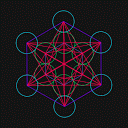When my husband and I were married thirty years ago, I inherited the role of ‘rebbetzin’ that came with marrying a rabbi. When he proposed, he asked me to think about what this role would mean and how, to a certain extent, our lives, and those of our children, would become more public. What he did not foresee, or certainly did not warn me, was the amusing comment that, over the years, has continued to amaze me. “That’s funny, you don’t look like a rabbi’s wife.” Always said (and received) with a smile, these few words have always left me bemused as I am not sure what a rabbi’s wife looks like and why I do not fit some preconceived notion. If the same people, casually met, would have been aware of my outspoken and passionate interests in feminism and spirituality, they may have been convinced that I don’t sound like a rabbi’s wife either! This comment has certainly served as a good introduction to my considering the role of stereotypes in our lives.
Surface and substance— where does one begin and the other end? Our physical appearance, apparent strength or weaknesses, our gender, race and nationality, the clothing, colors and adornments we chose to wear — all are taken in instantly by those we meet and filtered through a perceptive lens that has evolved within them through their life’s experience. Each of us operate in the same way and the more tied we are to the egoic mind, as described by Tolle, the more we assume that our perceptions of others, gained in this way, are valid.
Such superficial coverings, including the personality traits we show to the world, conceal, in varying degrees, the essence of who are— the former, where our individuality is found and the latter where our similitude resides in the identical divine sparks that animates each human being as children of One God, splendid in our diversity.
What is not quite so obvious when we first meet, is the intanglible information we intuit vibrationally, probably coming closer to the truth of the essence of the other. In an unconscious state, we are unaware that we take in information on many levels, and that surface impressions are so tied to our own inner voice as to be rightfully more to do with ourselves than the person we are meeting.
It is interesting to view all the subgroups we can identify with in terms of race, nationality, roles, gender and sexual preferences (to name just a few) and then to think of the stereotypes that abound about these groupings. Do they apply to us? Instantly we recognize where we match and more importantly, where we don’t.
When I was training to become a speech and hearing therapist in what seems now to have been a separate lifetime ago, each therapist-in -training had to agree, for a period of 2 week and in all situations, to ‘become’ a stutterer to know what this speech disorder feels like to the person dealing with it. It was a humbling experience indeed. Ask any woman who chooses to wear the hijab in Western society, and especially post 9/11, how her choice affects the reaction of strangers in the streets, or its effects on the initial moments of meeting someone not of her faith, for the first time? What of the elderly, or those in wheelchairs, who experience invisibility as strangers address whoever accompanies them rather than talk directly to them? If as heterosexuals, we were asked if we are gay, surely we realize that our sexual preference tells nothing about the core of who we are?
One of the many joys of having President Obama in office, is that the barrier of race has cracked and is crumbling. For the first time, many have been able to see through their own limiting stereotype, to the essence of the amazing man who now leads our country and the world. His meteoric rise, a great gift to us all, has cracked open the imprisoning national lens that has separated us, one from another.
How do we deal with difference? How much trust do we have in stereotypes? How much of our assessment of others is tainted because we are unaware or unable to see beyond the surface and the touch the substance of one another? Surely widening our perspective and becoming conscious of the lens through which we each view our lives will assist us to connect in more meaningful ways.
